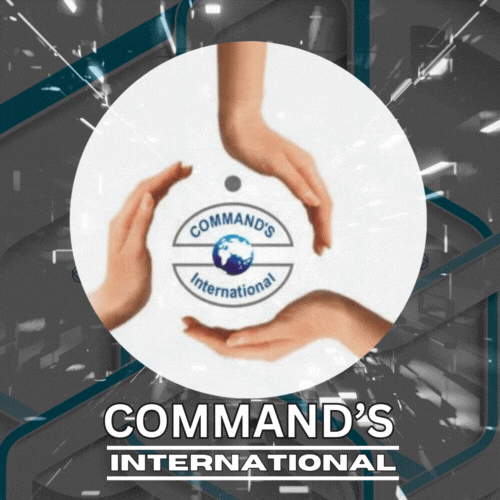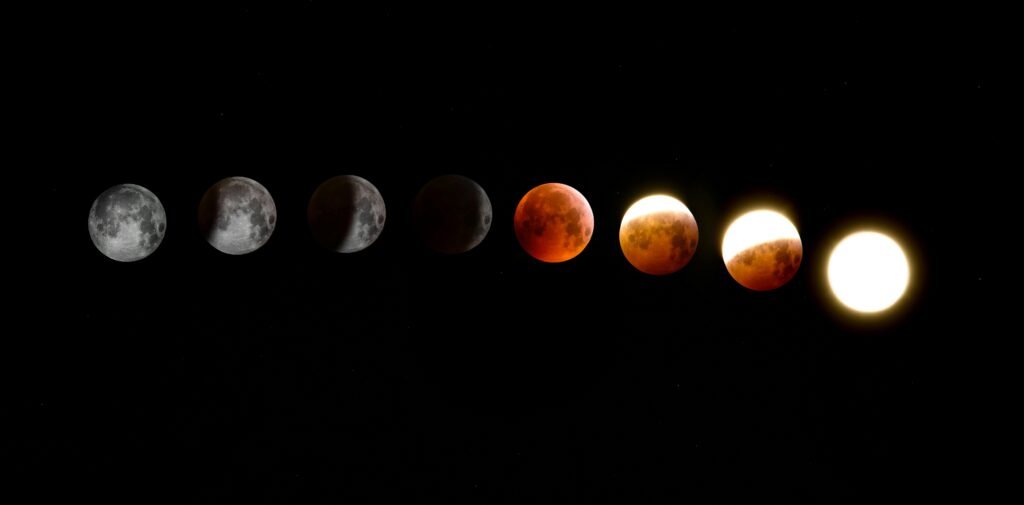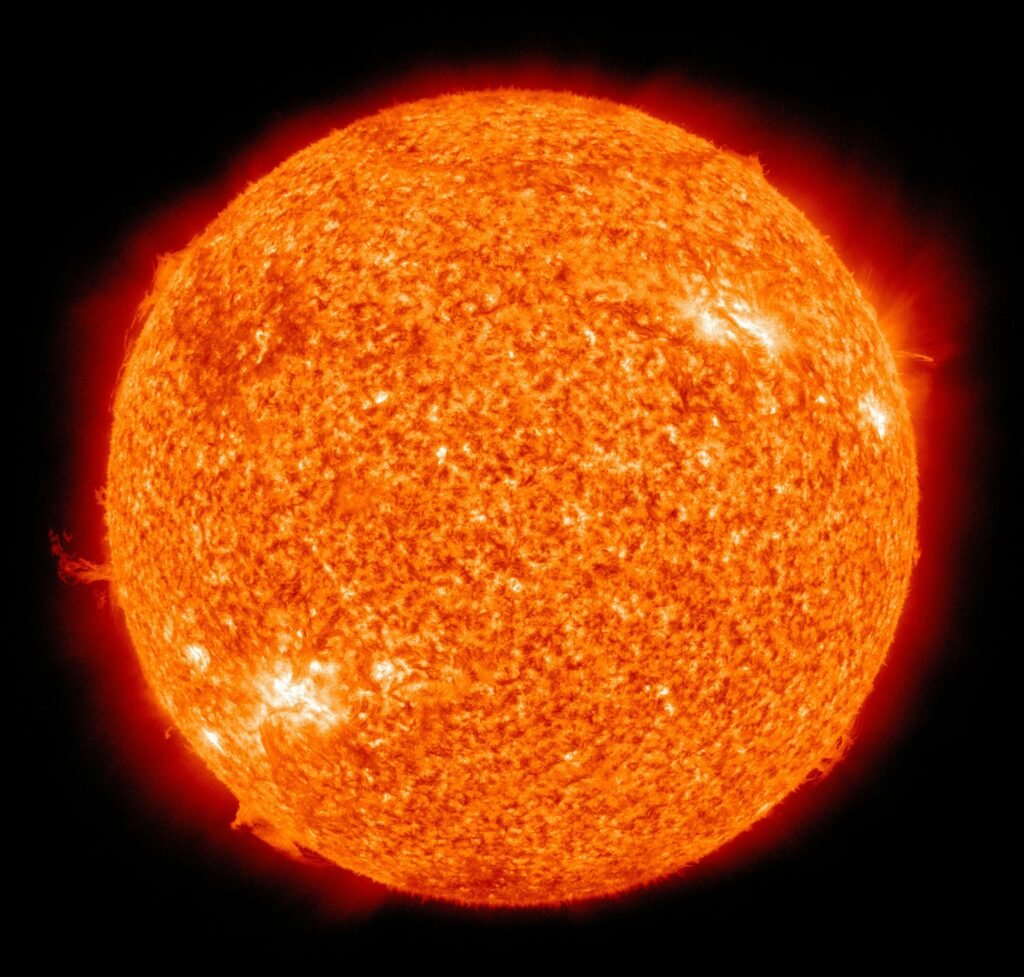
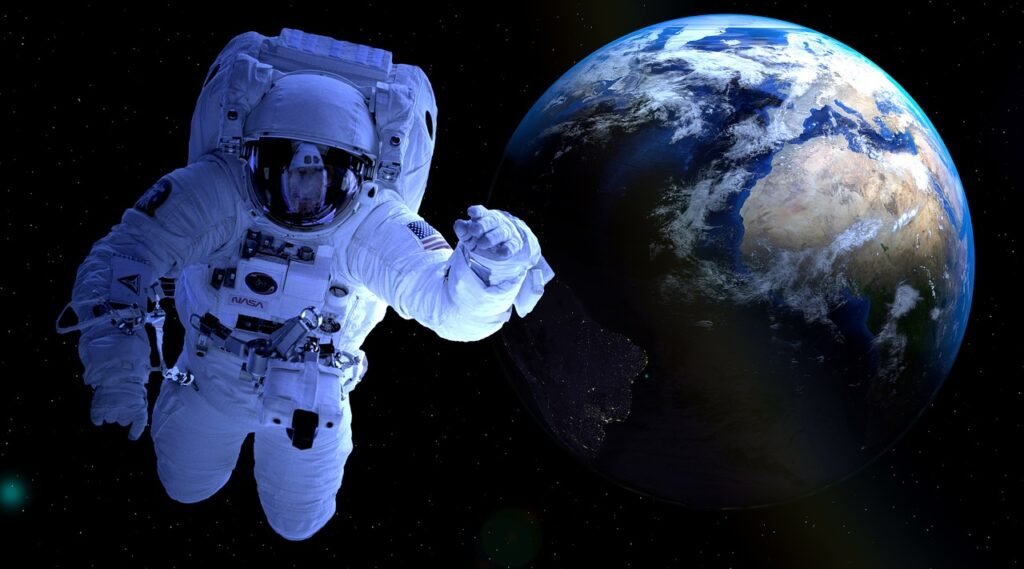
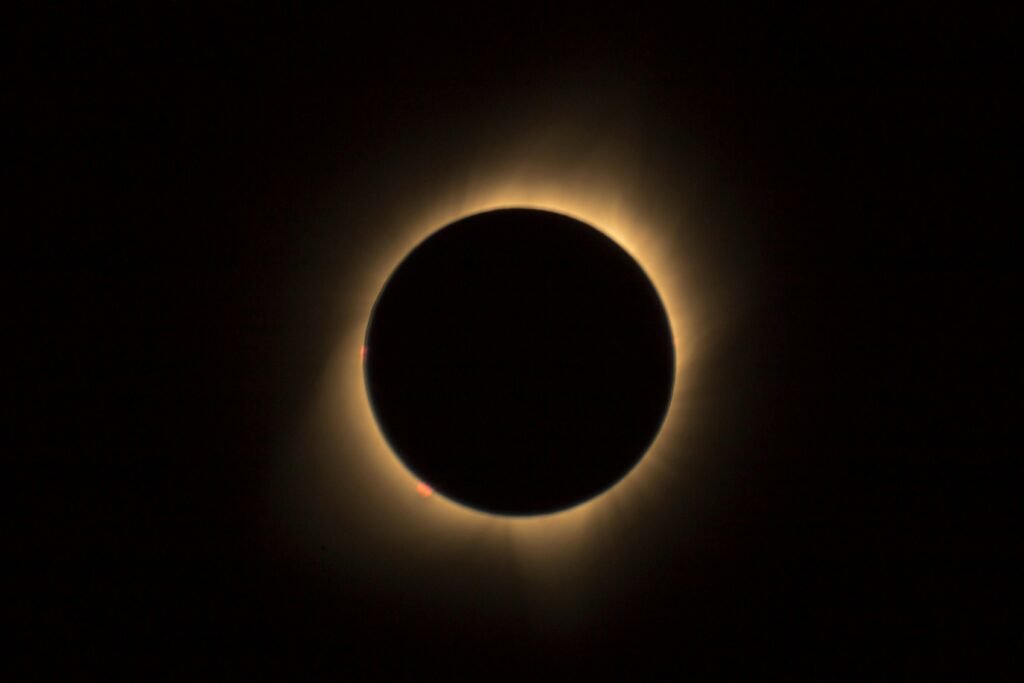
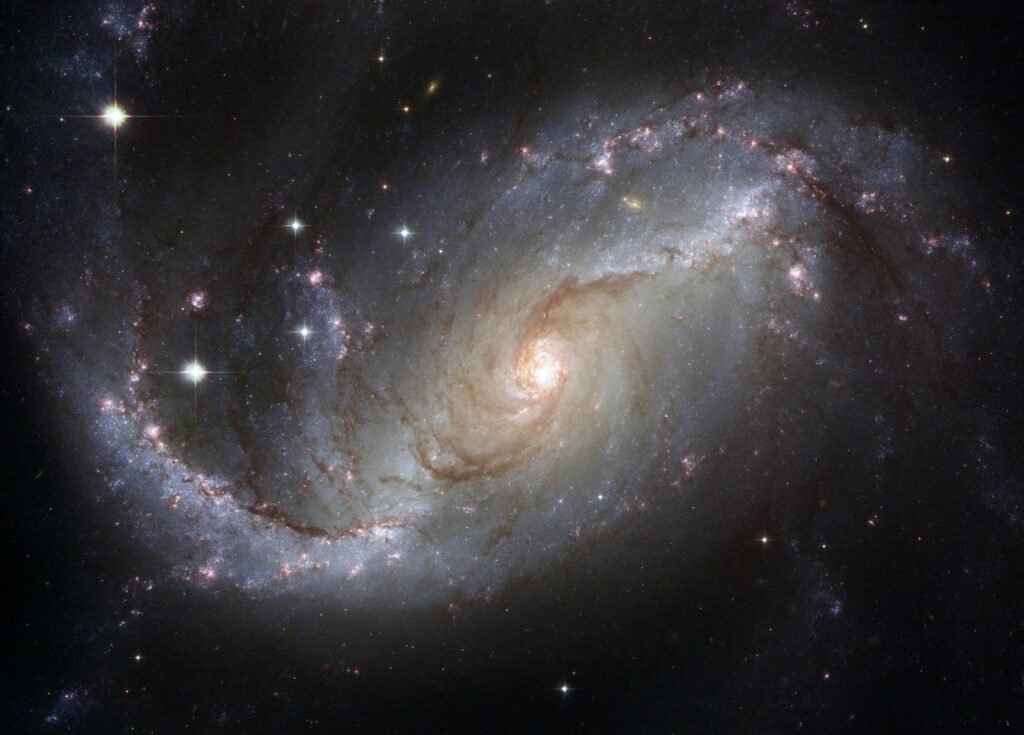
The universe holds infinite wonders, from celestial bodies to the cutting-edge technologies that enable space exploration. Learning the vocabulary of space and astronomy can help us understand these marvels and describe the human journey into the cosmos.
🌌 The Universe
Celestial Bodies and Phenomena
- Star – A massive, luminous ball of gas held together by gravity, like the Sun.
Example: The Sun is the closest star to Earth. - Planet – A celestial body that orbits a star and has enough mass to be nearly round.
Example: Earth is the third planet from the Sun - Asteroid – A small, rocky body that orbits the Sun, primarily found in the asteroid belt.
- Comet – A celestial body composed of ice and dust that develops a glowing tail when near the Sun.
- Black Hole – A region in space where gravity is so strong that even light cannot escape.
- Galaxy – A massive system of stars, gas, and dust bound together by gravity.
- Nebula – A giant cloud of gas and dust in space, often the birthplace of stars.
- Constellation – A group of stars forming a recognizable pattern.
Example: Orion is one of the most famous constellations. - Eclipse – The event when one celestial body moves into the shadow of another.
Example: A solar eclipse occurs when the Moon blocks the Sun.
- The Sun – The star at the center of our solar system.
- Mercury – The closest planet to the Sun.
- Venus – Known for its thick, toxic atmosphere.
- Earth – The only planet known to support life.
- Mars – Called the Red Planet due to its reddish appearance.
- Jupiter – The largest planet, with a giant red spot.
- Saturn – Famous for its rings made of ice and rock.
- Uranus – A planet with a bluish-green color due to methane gas.
- Neptune – The farthest planet from the Sun, known for its intense blue color.
🚀 Space Exploration Vocabulary
Equipment and Vehicles
- Rocket – A vehicle that propels itself into space.
Example: The Saturn V rocket launched astronauts to the Moon. - Satellite – A man-made object placed in orbit to collect information or enable communication.
Example: GPS satellites are essential for navigation. - Space Station – A large spacecraft where astronauts live and conduct experiments.
Example: The ISS orbits Earth every 90 minutes. - Space Shuttle – A reusable spacecraft that transports astronauts and equipment.
- Space Probe – An unmanned spacecraft sent to study celestial bodies and phenomena.
Example: Voyager 1 has traveled beyond our solar system. - Rover – A robotic vehicle designed to explore the surface of planets or moons.
- Launch Pad – The platform from which rockets are launched into space.
Example: Launch Complex 39A at Kennedy Space Center is iconic. - UFO – Unidentified Flying Object; often associated with extraterrestrial life.
- Telescope – An instrument used to observe distant celestial objects.
🌍 Space Exploration Process
- Mission Control – The command center for monitoring and directing spacecraft.
- Astronaut – A person trained to travel and work in space.
- Spacesuit – A protective suit worn by astronauts in space.
- Orbit – The path of a celestial object as it moves around another.
- Trajectory – The path followed by a spacecraft.
- Docking – The process of connecting two spacecraft in orbit.
Example: Space shuttles docked with the ISS for crew transfer. - Solar Panel – A device that converts sunlight into energy, used in spacecraft.
🛸 Phenomena and Theories
- Big Bang – The theory explaining the origin of the universe.
- Cosmic Rays – High-energy particles that travel through space.
- Meteor Shower – A phenomenon where multiple meteors are visible in the night sky.
- Aurora – A natural light display in polar skies, caused by solar winds.
🗺️ Mapping the Sky
- Star Map – A diagram showing the positions of stars and constellations.
- Observatory – A facility equipped with telescopes for studying celestial events.
🗣️ Useful Phrases and Questions
- “What is a black hole?”
- “How do eclipses occur?”
- “Can you name a famous constellation?”
- “What is the purpose of a space probe?”
- “Have we discovered life beyond Earth?”
✨ Practice Questions
- Identify three items used in space exploration.
- Describe the phases of a rocket launch.
- Explain the significance of the Hubble Space Telescope.
- Discuss the role of constellations in navigation.
📌 Learn more about the universe and space exploration vocabulary at www.commandsglobal.com.
Discover the infinite wonders of space and master English in the process! 🌌✨
